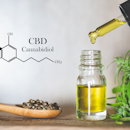
Independent Double Check
Sacred Cow or Effective Safety Measure
For many years, independent double checks have been used as a risk-reduction strategy. However, this strategy has been overused, misused, and under-valued by healthcare workers. How do we turn this stress-making, over-used, and time-consuming safety check into a process that meets the needs of today’s healthcare worker, prescriber, and pharmacist?
What Constitutes an Independent Double-Check?
The Institute for Safe Medication Practices (ISMP) defines an independent double-check as “a process in which two clinicians independently check each component of prescribing, dispensing, and administering medication, including the following:
- Comparison to prescriber’s order
- Is this the prescribed drug?
- Is this the prescribed drug dose/strength/rate of infusion?
- Is this the prescribed route of administration?
- Is this the right patient?
- Is this the prescribed frequency/time for drug administration?
- Cognitive Checks
- Does the drug’s indication match the patient’s diagnosis?
- Is this the right formulation of the drug?
- Are dose calculations correct?
- Is the dosing formula used to derive the dose correct (mg/kg or mcg/kg/hr)?
- Is the prescribed dose appropriate?
- Is the dosing frequency/timing appropriate?
- Is the route of administration safe?
- Are pump settings correct?
- Is the infusion line attached to the correct port?
- Have appropriate monitoring tests been ordered?
- Are the test results upon which a dose has been based verified as belonging to this patient?
(Institute of Safe Medication Practices (ISMP, 2013)
Second, we need to recognize the strengths and weaknesses of the process.
Strengths of Independent Double-Checks:
- When used judiciously, independent double checks can detect up to 95% of errors
- Automated double checks, such as barcoding and smart pump technology, can provide better results when used in conjunction with manual double checks
(ISMP, 2013)
Weaknesses of Independent Double-Checks:
- In many facilities, it may be the only safeguard in place used on every medication
- The double-check becomes a confirmation of what the clinician is saying rather than an independent check without prior knowledge of the results
- The healthcare workers become complacent with the task of double-checking especially when errors are not found
(ISMP, 2013; Hewitt, Chreim, & Forster, 2016).
Third, consider the following recommendations to improve the compliance and worth of independent double checks.
To Reduce the Risk of Bias and to Increase Efficacy:
- The double check must be done independently by a second person
- This means both healthcare workers must review the orders, the drug, lab results, and calculations separately
- Two people are unlikely to make the same error when checking independently
- Judicious use of double checks
- Double checks should be used for a very select group of high-risk tasks and high-alert medications
- Not all high-alert medications warrant an independent double-check
- Healthcare facilities should determine the medications that require an independent double-check from the ISMP high-alert Medication List
- This list changes annually, so the healthcare facility must be cognizant of the changes and review their list annually
- Double checks should be used for a very select group of high-risk tasks and high-alert medications
- Avoid reliance on double-checks as the sole safety check
- Manual independent double checks should be used in conjunction with technology to reduce errors and time expenditures
- Conduct a cognitive review of the medication
- Perform independent double checks in a safe and quiet place, without distractions
- Standardized process
- Education on process
- Competency validation
- Intermittent quality checks
(ISMP, 2013; Hewitt, Chreim, Forster, 2016)
How does a healthcare provider meet this standard of care? That is the question fueling the concept that independent double checks are one of nursing’s “sacred cows” (ISMP, 2013; Hewitt, Chreim, Forster, 2016). A “sacred cow” is a practice that is grounded in tradition rather than science and is considered ineffective and unnecessary (Miller, Hayes, & Carey, 2015). With this in mind, a brief search of the literature returns a plethora of high-quality, evidence-based research findings of the benefits of the independent double-check, quickly dispelling the notion of it being a “sacred cow”. The value of the independent double-check has been repeatedly reaffirmed in research studies.
Many of the pitfalls of medication administration have been reduced with the advent of computer-generated orders, dispensing technological advances, barcoding, and smart infusion pumps. However, one must not become complacent that these technologies eliminate errors. The technology used in conjunction with independent double checks can help decrease medication errors, but the double-checking process must be used judiciously on select, high-risk medications. The inclusion of the independent double-check should not be taken lightly. At its best and when done correctly, the independent double-check can literally save a life.
References
Raising Teens Today.com (2018). Is my child vaping: here’s 9 signs to watch for. Retrieved from: Hewitt, T. Chreim, S, & Forster, A. (2016). Double checking: a second look.
Institute for Safe Medication Practices. (2013). Independent double checks: Undervalued and misused: Selective use of this strategy can plan an important role in medication safety.




